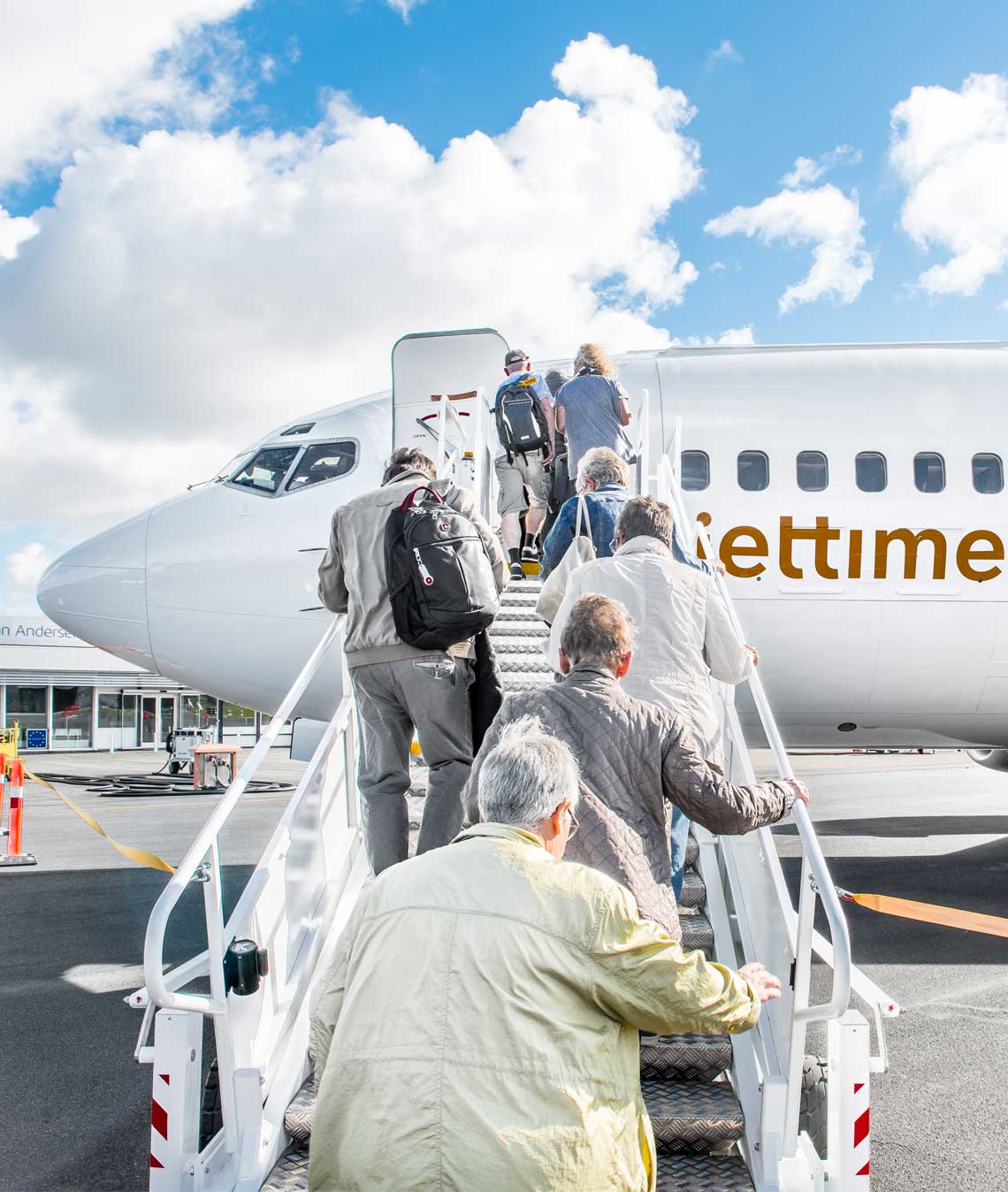History
History of the airport dates back to 1943
The history of Hans Christian Andersen Airport dates back to 1943, when the German occupying forces began building an airfield at Beldringe. Some farms near the airport were removed, while others that were not directly in the way of the runway remain.
Since the 1950s, Hans Christian Andersen Airport has evolved to a greater or lesser extent as time has passed. Some years there has been a lot of expansion and other years less, but over time the airport has quietly evolved.
In 1969, the part of the airport building that housed the tower and the restaurant furnished by the Germans burned down. In 1970, the current terminal building and tower were built.
The terminal was later added to as traffic increased through the 1970s and 1980s.
There have been significant periods in Hans Christian Andersen Airport's history. For example, the time when Mr. Maersk Mc-Kinney Møller decided to usher in the Jet Age by acquiring the first Boeing 737s, which were to be used on the morning and evening flights from Odense to Copenhagen. The aircraft would also be used to fly charter guests. This meant that Hans Christian Andersen Airport had to reinforce the runway to carry the much heavier aircraft than previously used.

For the next 20 years, domestic flights were stable at Hans Christian Andersen Airport. It was a distinctly Maersk airport with many Maersk Air employees for ticket sales, handling etc.
During the 1980s, the first serious plans for the Storebælt Bridge began, and the question of Hans Christian Andersen Airport's survival was on the agenda in the Ministry of Transport, in the County Council and in the municipal councils around the airport.
On 1 January 1998, the state transferred Hans Christian Andersen Airport to Funen, and Hans Christian Andersen Airport S.m.b.a. was formed by Funen County and the municipalities of Odense, Søndersø, Otterup, Bogense and Munkebo. In the light of the municipal reform and the abolition of the counties, the owners are now the municipalities of Odense and Nordfyn.
A board of representatives was set up, headed by the mayor of the county (Karen Nøhr) and representatives of the interested municipalities.
A board with knowledge of aviation, business management and law would be set up.
The Board of Representatives decided to set up a Board with knowledge of aviation, business management and law.
At the end of 1998, the era of scheduled flights from Hans Christian Andersen Airport came to an end.
However, this was not the end of Hans Christian Andersen Airport.
The time was spent on many different initiatives - for example, a deal was struck with an English company for a few years, which meant that the airport received a lot of money. When the cooperation with the English company ended, charter flights from Hans Christian Andersen Airport began to gain ground again.
At Hans Christian Andersen Airport, we look forward to the future, and we look forward to even more travellers experiencing how easy and convenient it is to fly from our airport. There are no long waits at check-in or security, and you can even park for free just 50 metres from the check-in desks.
The total area of Hans Christian Andersen Airport is about 170 ha. Of this, approximately 120 ha are within the fence.
